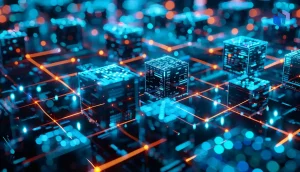What Does Data Bus Mean?
A data bus is a system within a computer or device, consisting of a connector or set of wires, that provides transportation for data. Different kinds of data buses have evolved along with personal computers and other pieces of hardware.
Techopedia Explains Data Bus
In general, a data bus is broadly defined. The first standard for data bus was 32-bit, whereas newer 64-bit systems can handle much greater amounts of data. Other data bus widths include 1-bit, 4-bit, 8-bit, and 16-bit.
A data bus can transfer data to and from the memory of a computer, or into or out of the central processing unit (CPU) that acts as the device’s “engine.” A data bus can also transfer information between two computers.
Newer, wider data buses can handle higher bitrates, and the amount of data they can transfer is known as bandwidth.
The speed at which information is exchanged between components is regulated by a bus controller. Information coming from the CPU, for example, will always travel at a much higher speed than data coming from other components.
However, in a computer, everything must travel at the same speed, and bus controllers serve this purpose. Earlier, first-generation data buses had no controller, and consisted of simple bundles of wire that connected computer memory to the various peripheral devices.
A data bus can operate as a parallel or serial bus depending on how the data is carried. A parallel bus is used in more complex connections that must carry more than one bit at a time. Common examples include Peripheral Component Interconnect (PCI) Express and Small Computer System Interface (SCSI) connections. Data is carried on many wires simultaneously.
Serial buses use a single wire to send and receive data between components, and usually consist of a relatively small amount of wires, so they’re somewhat simpler than parallel connections. Common examples of a serial bus include Universal serial bus (USB) and serial advanced technology attachment (SATA) connections.
Every computer also contains both internal (or local) data buses and external data buses. A local data bus connects all the components of the motherboard, while an external one connects the motherboard to every other peripheral device.
The use of the term “data bus” in IT is somewhat similar to the use of the term “electric busbar” in electronics. The electronic busbar provides a means to transfer the current in somewhat the same way that the data bus provides a way to transfer data.
In today’s complicated computing systems, data is often in transit, running through various parts of the computer’s motherboard and peripheral structures. With new network designs, the data is also flowing between many different pieces of hardware and a broader cabled or virtual system. Data buses are fundamental tools for helping facilitate all of the data transfer that allows so much on-demand data transmission in consumer and other systems.





